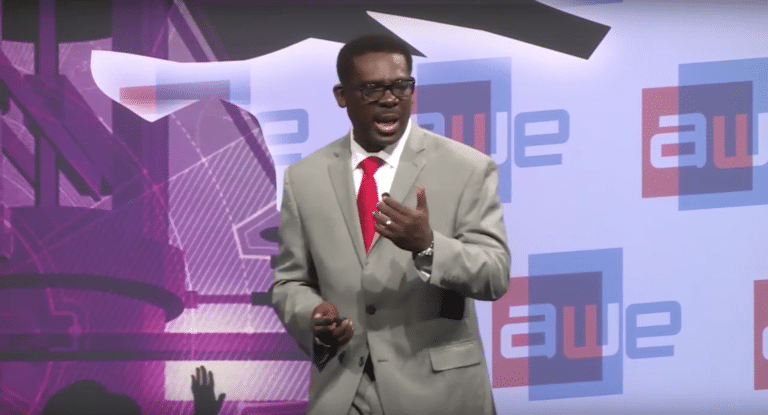
One of AR’s biggest revenue opportunities is in the enterprise. This was indicated by ARtillry’s latest forecast, and lots of investor sentiment. But even more powerful than those signals is actual evidence that AR is demonstrating ROI.
The latest example is Coca Cola. It’s using AR to fix broken equipment and for “changeovers” to assembly lines. That’s when the lines are quickly retooled for different products (e.g. bottle sizes or flavors). In both cases it’s about reducing downtime and increasing the bottom line.
“Whatever you do has to impact the bottom line,” said Coca-Cola Director of Product Management Michael Terrell at AWE Europe (video below). “When a machine goes down, it’s the heartbeat of our operation. So if it’s down, we’re not producing product. Downtime is our enemy.”
Specifically, the company has implemented a combination of Google Glass Enterprise Edition and Upskill Skylight. One key function has been remote assistance for machine maintenance. When a bottle filler recently broke for example, AR remote assistance enabled quick recovery.
“One of our techs grabbed the glasses and dialed in a vendor from a few thousand miles away,” said Terrell. “It allowed him to troubleshoot and we got that equipment up and running within an hour. Prior to having this technology, cases like that could end up costing me a whole shift.”
Besides downtime, Terrell underscores indirect costs such as travel expenses for flying in a vendor or remote expert (as we discussed recently with Scope AR). The same goes for assembly line changeovers, which can happen much faster by empowering operators with reference material.
“When we’re changing over, we’re not producing product.” said Terrell. “From a knowledge transfer standpoint, right there at a touch of the glasses [are] step-by-step directions on changeovers or step-by-step directions on trouble shooting. So this has really been a game changer for us.”
Beyond these benefits are broader implications for empowering the overall workforce, as we recently discussed with Presence Capital’s Amitt Mahajan. AR’s ability to assist manufacturing reduces the need for extensive training, making more people qualified for more jobs.
“With sophisticated equipment, before we allow one of our technicians to touch that equipment, he or she has to go through at least four weeks of training,” said Terrell. “So what I’m seeing now with this technology is that we’re reducing that time by as much as 50 percent.”
Lastly, Terrell admits that implementing new technology isn’t easy. Though he’s sold on AR, it takes many moving parts to adopt it — both internally and externally (e.g. bottling partners). His advice: the best way to sell new technology is with hard data about bottom line impact.
“I’ve been a change agent the majority of my career and driving change isn’t easy,” he said. “But we always have to go back to the data and let it prove or disprove what we’re thinking. And in this case, the data is showing me that this technology is truly impacting my bottom line.”
For a deeper dive on AR & VR insights, see ARtillry’s new intelligence subscription, and sign up for the free ARtillry Weekly newsletter.
Disclosure: ARtillry has no financial stake in the companies mentioned in this post, nor received payment for its production. Disclosure and ethics policy can be seen here.
